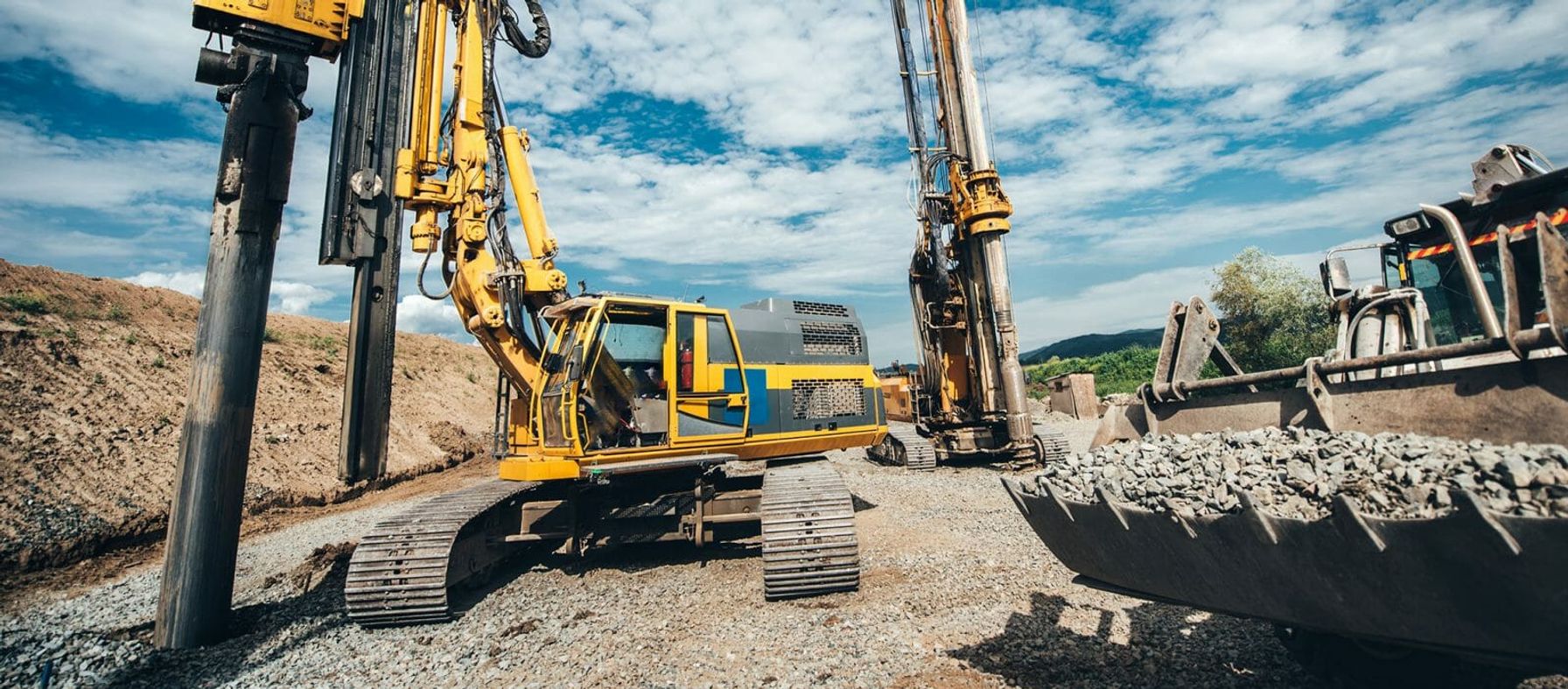The 10-Minute Rule for Geotheta
Wiki Article
See This Report about Geotheta
Table of ContentsThe Ultimate Guide To GeothetaRumored Buzz on GeothetaGeotheta for BeginnersThe smart Trick of Geotheta That Nobody is Talking AboutThe Definitive Guide to Geotheta

They carry out website examinations, gather samples, perform laboratory examinations, and assess data to assess the suitability of the ground for construction projects - Consulting Engineer. Based upon their searchings for, geotechnical designers provide referrals for foundation design, incline security, keeping frameworks, and mitigation of geotechnical risks. They team up with various other specialists, such as designers, architectural engineers, and building teams, to ensure that geotechnical considerations are incorporated right into the total project layout and application
By assessing the actions and buildings of dirt and rock, they can identify possible geotechnical dangers such as landslides, soil negotiation, or slope instability. Their knowledge assists avoid failures or mishaps that can endanger lives and property. Right here are some detailed tasks and responsibilities of a geotechnical designer: Site Investigation: Geotechnical engineers conduct website examinations to gather data on subsurface conditions.
They interpret the information to comprehend the buildings and behavior of the soil and rock, including their stamina, leaks in the structure, compaction qualities, and groundwater conditions. Geotechnical Evaluation and Style: Geotechnical engineers evaluate the information accumulated during website investigations to analyze the stability and viability of the site for building and construction jobs. They carry out geotechnical computations and modeling to review factors such as bearing ability, settlement, incline security, lateral earth pressures, and groundwater flow.
The 4-Minute Rule for Geotheta
Foundation Design: Geotechnical designers play an important duty in creating foundations that can securely support the intended framework. They evaluate the soil problems and load demands to determine the suitable foundation kind, such as shallow foundations (e.g., grounds), deep structures (e.g (https://geotheta.carrd.co/)., piles), or specialized methods like dirt renovation. They take into consideration variables such as settlement restrictions, birthing capacity, and soil-structure communication to create optimal foundation designsThey examine construction plans, display site tasks, and carry out area examinations to validate that the design suggestions are adhered to. If unforeseen geotechnical issues arise, they assess the scenario and give referrals for remediation or adjustments to the design. Danger Analysis and Mitigation: Geotechnical designers evaluate geotechnical hazards and risks connected with the project website, such as landslides, liquefaction, or soil erosion.

Partnership and Communication: Geotechnical designers function carefully with other experts entailed in a project, such as designers, structural designers, and building groups. Efficient communication and collaboration are necessary to incorporate geotechnical factors to consider into the general task style and construction procedure. Geotechnical engineers give technical competence, answer queries, and make certain that geotechnical requirements are met.
Our Geotheta PDFs
Below are some kinds of geotechnical designers: Foundation Engineer: Foundation engineers specialize in designing and analyzing foundations for frameworks. They assess the soil conditions, load needs, and site qualities to figure out one of the most proper foundation type and design, such as superficial structures, deep foundations, or specialized strategies like stack foundations.They assess the elements influencing slope stability, such as soil homes, groundwater conditions, and slope geometry, and develop approaches to avoid incline failures and alleviate risks. Quake Engineer: Earthquake designers specialize in assessing and making structures to hold up against seismic pressures. They evaluate the seismic threat of a website, examine soil liquefaction capacity, and establish seismic style standards to make certain the security and durability of frameworks throughout quakes.
They do area testing, collect examples, and analyze the accumulated data to characterize the soil residential properties, geologic developments, and groundwater conditions at a site. Geotechnical Instrumentation Designer: Geotechnical instrumentation engineers focus on surveillance and determining the behavior of soil, rock, and frameworks. They install and preserve instrumentation systems that keep track of variables such as dirt settlement, groundwater levels, slope activities, and structural displacements to assess efficiency and supply early warnings of potential concerns.
Getting My Geotheta To Work
They carry out tests such as triaxial tests, combination examinations, direct shear tests, and permeability tests to gather information for geotechnical evaluation and design. Geosynthetics Designer: Geosynthetics designers focus on the design and application of geosynthetic materials, such as geotextiles, geogrids, and geomembranes. They use these materials to boost dirt stability, enhance inclines, offer drain services, and control erosion.They have a tendency to be investigatory individuals, which implies they're intellectual, reflective, and analytical. They wonder, systematic, logical, analytical, and sensible. Several of them are likewise social, indicating they're kind, generous, participating, patient, caring, handy, empathetic, sensible, and pleasant. Does this seem like you? Take our totally free career test to discover if geotechnical designer is one of your leading career matches.
In the workplace setting, geotechnical engineers utilize specialized software application devices to execute computations, produce layouts, and evaluate information. They prepare reports, testimonial project requirements, communicate with customers and staff member, and coordinate project activities. The office setup supplies a favorable environment for research, evaluation, and collaboration with various other specialists associated with the job.
Things about Geotheta
They frequently visit job sites to carry out website investigations, examine geotechnical problems, and gather data for evaluation. These gos to involve traveling to different places, sometimes in remote or difficult surfaces. Geotechnical engineers might do dirt tasting, conduct examinations, and screen building and construction tasks to guarantee that the geotechnical aspects of the project are being carried out properly.Geotechnical designers also operate in specialized geotechnical laboratories. In these facilities, they conduct experiments, perform tests on soil and rock examples, and analyze the engineering buildings of the materials. click here for more Geotechnical research laboratory designers function thoroughly in these environments, handling screening devices, running instruments, and taping data. They collaborate with other lab team to guarantee precise and reliable testing outcomes.
Report this wiki page